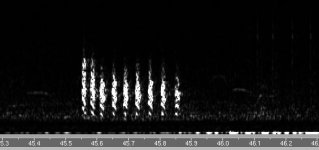Btw, I don't favour the name 'Chinese' Lesser Whitethroat for
minula, given that its breeding range is restricted to the Xinjiang Uyghur Autonomous Region, whilst
margelanica is mostly encountered in Gansu and Qinghai (although also marginally(?) occurring north of the Chinese border).
If the widely-used names 'Desert' or 'Small' Lesser Whitethroat are no longer considered appropriate (despite
minula still being the most desert-specific and smallest taxon), then Xinjiang (or Tarim?) Lesser Whitethroat would be an accurate, less ambiguous and less politically-sensitive alternative. Several species are named 'Tibetan'. Why not give equivalent respect/recognition to Xinjiang? Using 'Chinese' for
minula is rather like using 'British' Crossbill for
Loxia scotica.






